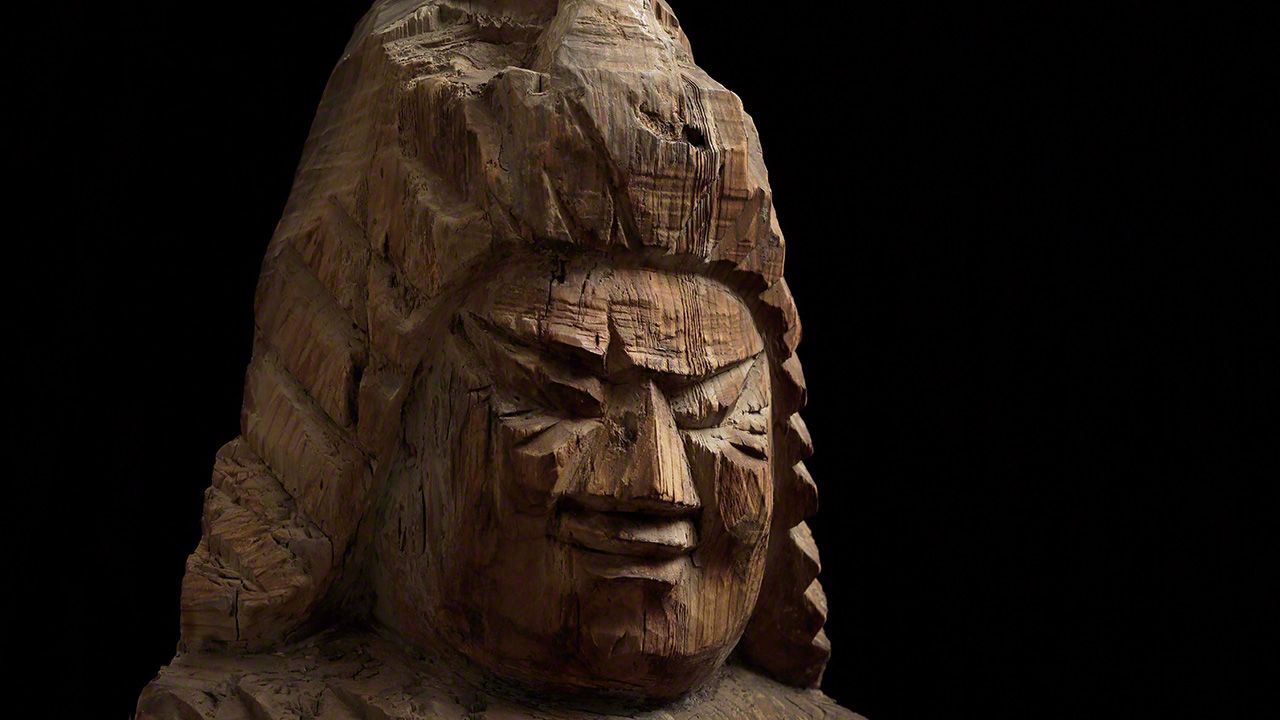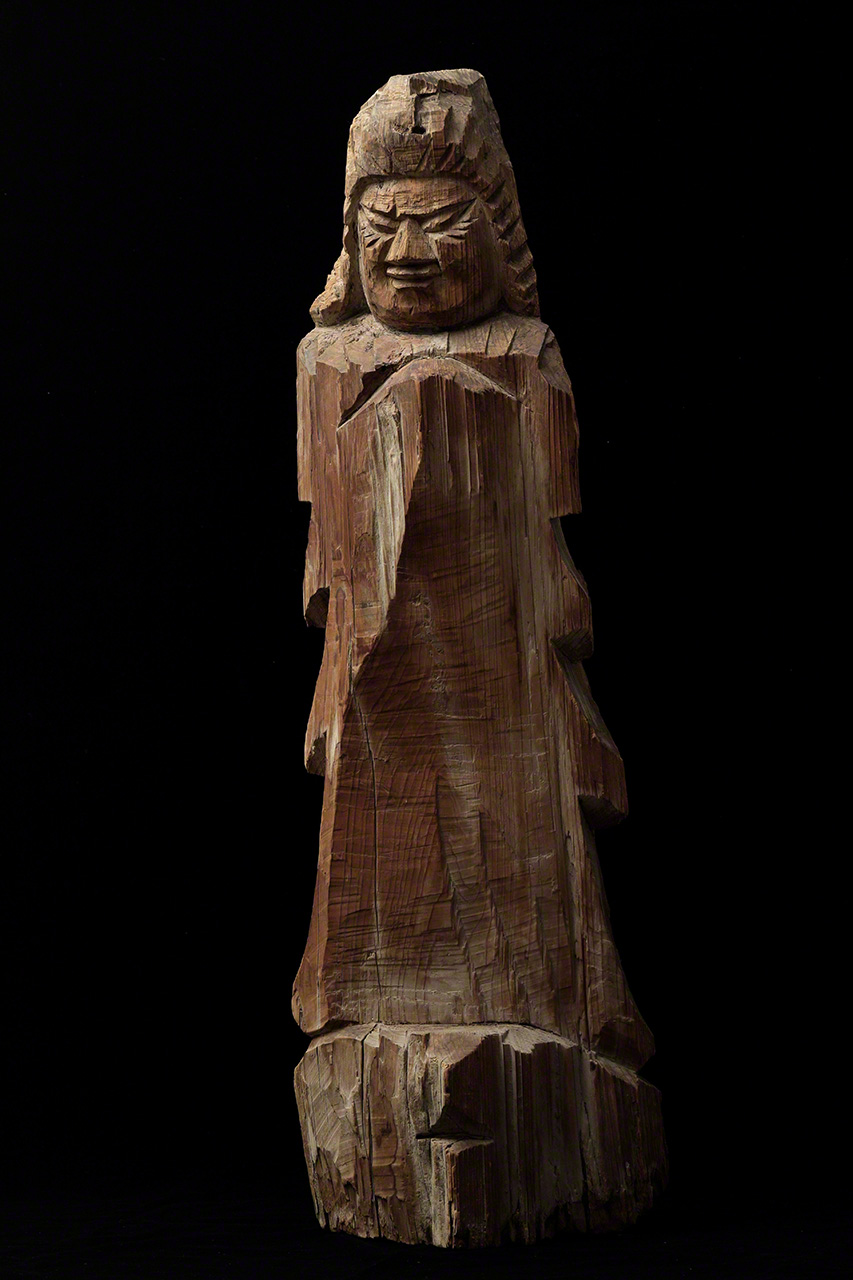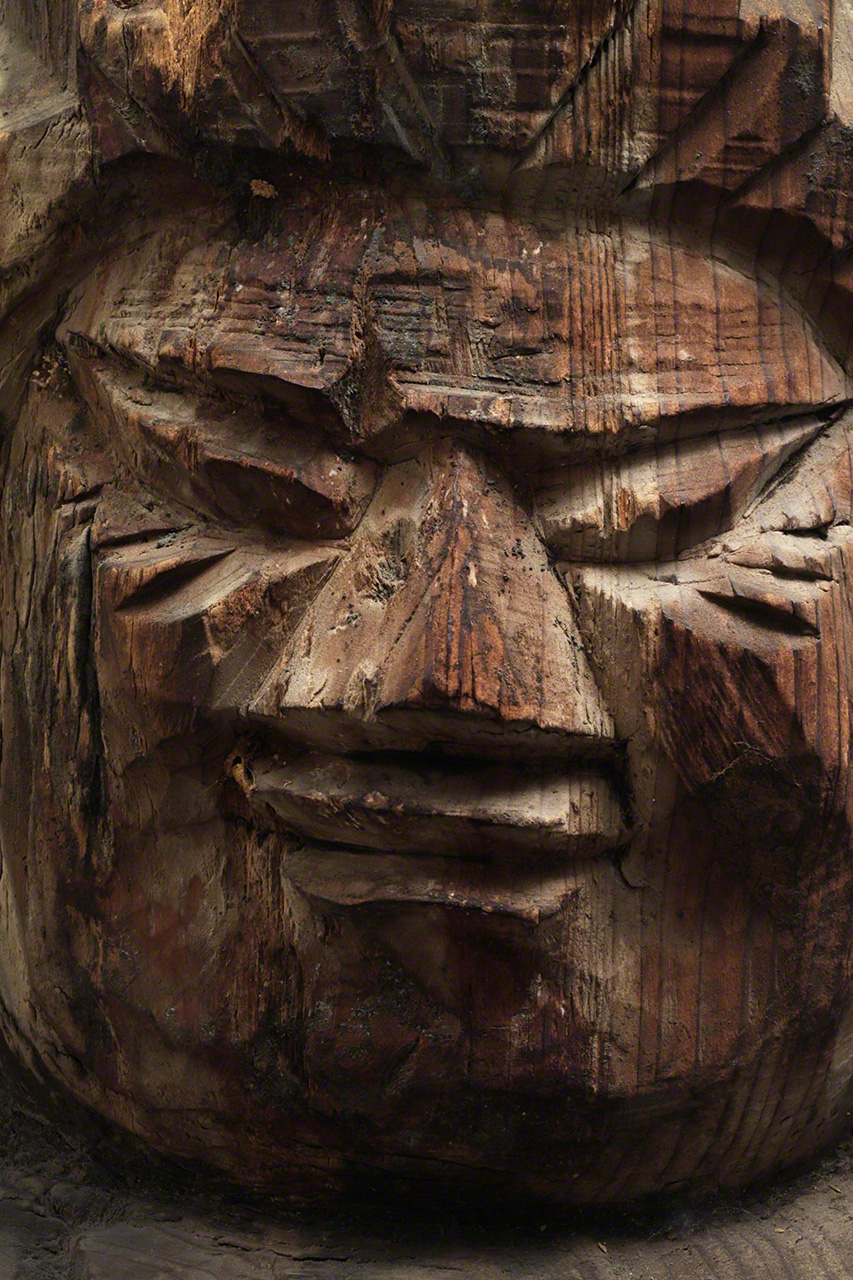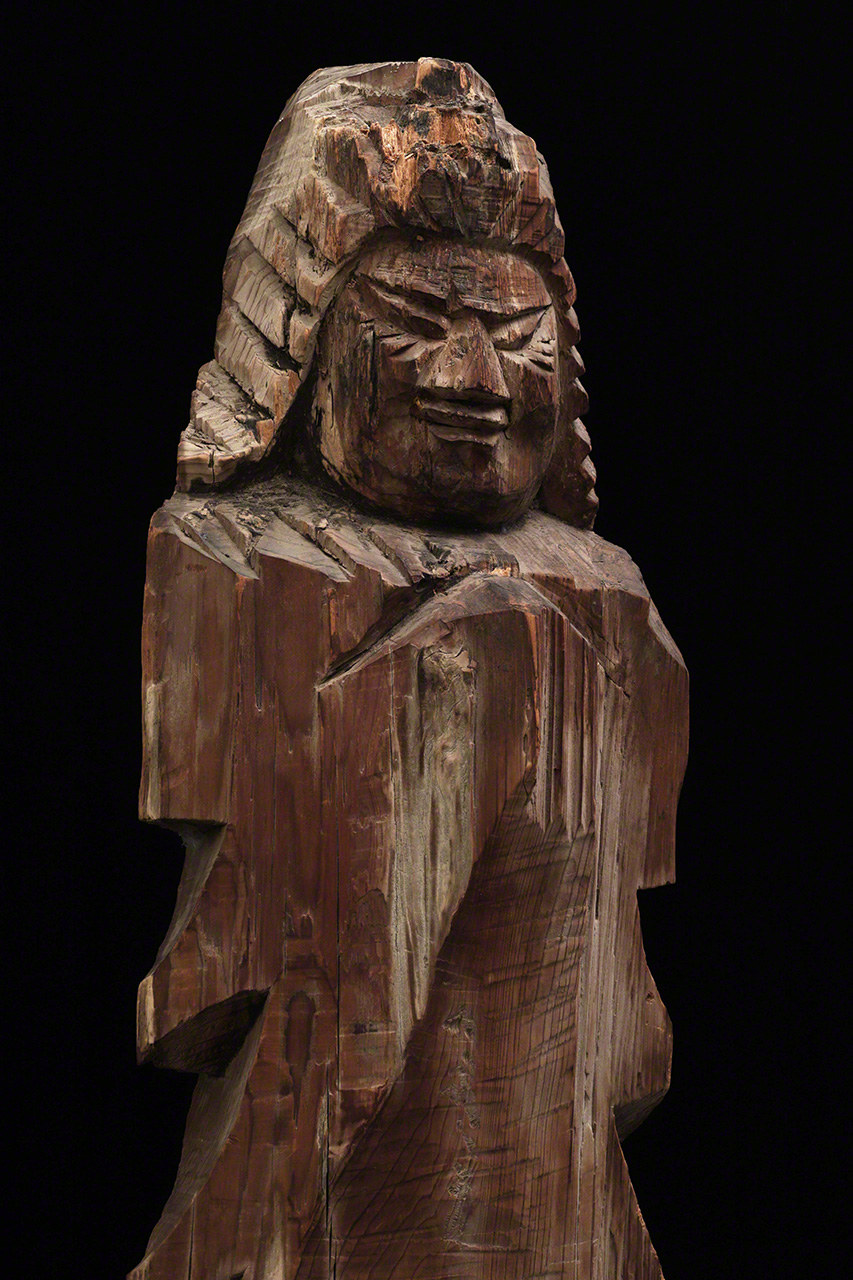
Sculpture of the Buddha by the Monk Enkū
Culture Arts History- English
- 日本語
- 简体字
- 繁體字
- Français
- Español
- العربية
- Русский
What draws us so powerfully to the roughly hewn smile on this simple Buddhist image?
In the early decades of the Edo Period (1603–1868), an itinerant monk traveled around the country, carving Buddhist images. His name was Enkū (1632–95). Born in the province of Mino (now Gifu Prefecture), Enkū undertook rigorous training on Mount Ōmine in Nara Prefecture and was inducted into the mystical syncretic traditions of shugendō, or mountain asceticism. From his base in Mino, he traveled from one end of the country to the other, from the Kansai region around Nara and Kyoto as far as the northern island of Hokkaidō, then still a largely unspoiled wilderness area known as Ezo. Everywhere he went, he carved Buddhist sculptures. Tradition tells that he made a vow to create 120,000 Buddhist images over the course of his life. Although some were commissioned by temples, he also made many images as gifts for people he met on his travels.
Enkū made sculptures of Shintō deities as well as figures from Buddhist iconography. One of the things that makes his sculptures so attractive is the remarkable freedom of their style, unrestrained by any consideration of the norms and iconography of traditional Buddhist art. It is believed that he completed his vow of carving 120,000 sculptures: More than 5,000 extant pieces have been confirmed as his work today.
He used simple chunks of wood, chopping the blocks vertically, and often used materials found in the environment, including driftwood found in rivers or on beaches and wood from fallen trees. He would flatten the corners of the wood and then carve zigzag patterns using a chisel or billhook. The biggest characteristic of his work is the unpretentious simplicity of his style. Fine details and delicacy of touch were not a priority. Instead, his work is marked by simplicity and a natural vigor. He added no adornments or coloration to his work, preferring to bring out the coarse grain and character of the wood. His work included many of what are called koppa-Butsu: Buddhist sculptures made from pieces of scrap wood that other people would have regarded as without value.

(© Muda Tomohiro)
The corners of the eyes of this wooden image curve up slightly, suggesting at first an expression of anger. Take a closer look, however, and you will see in fact that the lips are curled into a subtle gentle smile.
Enkū’s Buddhas are always smiling.

(© Muda Tomohiro)
Waga haha no / inochi ni kawaru / kesa nareya /
nori no mikage wa / yorozu o henThese monk’s robes a substitute for the life of my mother
The light of the dharma will live on for ten thousand ages
Enkū lost his mother at a young age, and it is often suggested that he decided to become a monk as a way of overcoming his sadness. This poem, taken from a collection of Enkū’s waka verse, conveys his affection and fondness for his mother. Recently, an image of the Amida Nyorai Buddha and a mirror were found inside of the 11-headed Kannon (the bodhisattva Avalokitesvara) carved by Enkū in Hashima, Gifu Prefecture. Many experts believe that the mirror was a keepsake of Enkū’s mother.
When he felt that his own body had started to decline, Enkū returned to his mother’s resting place on the banks of the Nagara River and began a final fast. He died at the age of 64 and became a sokushinbutsu (living, fossilized buddha). The loving expressions on the faces of his sculptures, perhaps inspired by memories of his mother’s compassionate smile, continue to move and inspire people today.

(© Muda Tomohiro)
Sculpture of the Buddha by Enkū
- Height: 77 cm
- Date: Edo period (seventeenth century)
- Private collection
(Originally published in Japanese. Banner photo: Buddha by Enkū. Private collection. Photo by Muda Tomohiro.)
